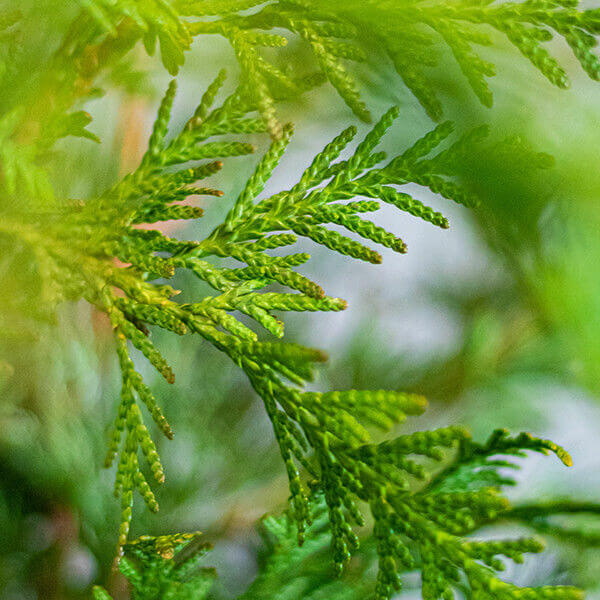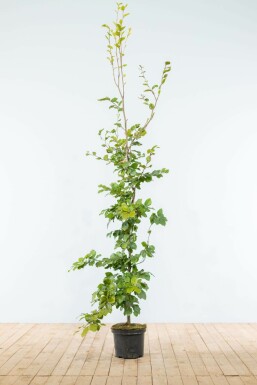Native Hedge Plants For Wildlife Gardens
Native Hedge Plants For Wildlife Gardens
Blog Article
Best Hedging Plants For Informal Borders
Improve your garden's appeal with lush hedge ranges such as Yew (Taxus), Thuja, Laurel, Photinia, and Bamboo, celebrated for their structural stability and ecological benefits.
Yew and Thuja supply evergreen coverage and winter strength, while Laurel provides fast development and broad, fragrant leaves.
Photinia includes seasonal beauty with its vibrant red foliage, and Bamboo provides a low-maintenance, serene ambiance.
These hedges enhance air quality, lower noise, and produce tranquil, personal spaces.
Appropriate planting, spacing, and upkeep make sure vigorous growth and eco-friendly consistency.
Explore how these lush varieties can raise your garden's charm and wellness.
Secret Takeaways
Transform Your Garden With Lush Hedge Varieties
- Select Yew for its thick, evergreen growth and unrivaled durability.
- Opt for Laurel for its fast development and broad leaves, making sure quick privacy.
- Choose Photinia for its dynamic seasonal foliage, which turns a striking dark red.
- Use Bamboo for a low-maintenance, winter-hardy hedge with aesthetic appeal.
- Space plants 2-3 per meter and prune routinely for ideal development and health.
Popular Hedge Plants
When transforming a garden with lush hedge varieties, it's necessary to consider popular hedge plants such as Yew, Thuja, Laurel, and Photinia due to their distinct qualities and advantages.
Yew (Taxus) is highly esteemed for its longevity and thick, green development, making it a prime option for sustaining landscapes.
Thuja is kept in mind for its evergreen foliage and robust winter season strength.
Photinia includes seasonal vibrancy with red leaves that darken gradually, developing vibrant visual appeal.
Laurel provides fast growth and fragrant, broad leaves, perfect for fast personal privacy.
In Addition, Bamboo is an excellent option for atmosphere, providing a low-maintenance, winter-hardy choice that enhances the garden's aesthetic with its elegant, swaying walking canes.
These choices accommodate a variety of horticultural needs and choices.
Advantages of Garden Hedges
Garden hedges offer a multitude of advantages, making them an important addition to any landscape. These natural barriers are affordable to implement and supply considerable wind security, enhancing air blood circulation and contributing to noise decrease. The dense foliage of hedges like Thuja and Beech ensures personal privacy by blocking visibility, developing a remote and serene environment.
Hedges likewise play an essential role in microclimate guideline, providing a steady environment that fosters plant development and lessens temperature fluctuations. Their detailed leaf structures filter pollutants, enhancing air quality and contributing to a much healthier garden ecosystem.
Additionally, hedges stand out in noise reduction, taking in and deflecting sound waves to lower ambient noise levels. This dual performance of offering both acoustic and visual personal privacy improves the general serenity and aesthetic appeal of any garden.
Planting and Maintenance Tips
For an effective hedge, careful preparation of the planting area is essential. Guarantee the soil has correct pH and drain to support strong root advancement.
Space the plants appropriately for the chosen species. Water the hedge often throughout its preliminary development stage, changing as required with seasonal modifications.
Implement a systematic pest control and disease prevention strategy, using chemical or organic treatments when required. Routinely examine for aphids, mites, and fungal infections.
Apply mulch to keep moisture and suppress weeds. Seasonal pruning promotes dense growth and air flow, important for plant health.
Following these guidelines will help you cultivate a vibrant, well-maintained hedge that boosts the charm of your garden.
Spacing and Cutting Guidelines
Spacing and Cutting Standards
Appropriate spacing and trimming are important for cultivating healthy, visually appealing hedges. Sufficient spacing makes sure each plant receives adequate nutrients, light, and air flow.
Follow these guidelines for optimum hedge upkeep:
- Spacing: Position hedge plants 2-3 plants per meter to motivate robust development.
- Pruning Strategies: Routine pruning is essential for keeping wanted hedge height and shape. Cut brand-new development in summer season and cut down older wood throughout winter.
- Seasonal Care: Adjust trimming schedules and methods according to seasonal requirements to ensure plant health.
- Hedge Height: Routinely screen and trim to preserve the wanted hedge height and achieve uniform looks.
Following these actions will ensure your hedge flourishes, enhancing both the appeal and functionality of your garden.
Selecting the Right Hedge
Picking the Right Hedge
Selecting the appropriate hedge involves assessing aspects such as fully grown height, foliage density, and environmental resilience. Effective hedge plant choice requires comprehending each types' development qualities and site-specific versatility.
For instance, Yew (Taxus) uses exceptional durability and dense development, while Thuja is noteworthy for its winter strength. Additionally, thinking about maintenance requirements is vital; fast-growing species like Laurel or Privet demand routine cutting, whereas low-maintenance choices like Bamboo or Ivy may be more effective for those seeking very little upkeep.
Ecological factors such as soil type, light schedule, and moisture conditions ought to likewise guide the choice process. This cautious technique ensures the selected hedges will thrive, supplying both practical and aesthetic advantages to the garden landscape.
Shipment and Planting Advice
To guarantee your hedge plants grow, they ought to be provided by specialized couriers and planted without delay upon arrival.
Follow these necessary steps for successful planting:
- Soil Preparation: Enhance the soil with raw material to enhance drainage and nutrient material.
- Planting Depth: Create a trench two times the width and equal to the depth of the root ball.
- Watering Methods: Water completely after planting, keeping the soil consistently wet but not saturated.
- Mulching: Use a layer of mulch to maintain moisture and suppress weeds.
Client Support and Service
Provided the vital role of timely support in horticultural pursuits, our client assistance group is readily available six days a week through telephone, e-mail, and social media to offer skilled suggestions and swiftly address any concerns. Their commitment to quick action times ensures customer fulfillment by dealing with inquiries connected to plant health, optimum planting approaches, and upkeep schedules.

This detailed support group, enhanced by a stellar 9.3/ 10 consumer ranking, highlights our commitment to improving the gardening experience for every customer.
Regularly Asked Concerns
How Long Does It Take for Hedge Plants to Establish?
Hedge plants typically need one to three years to become completely developed, with the precise period differing by species and growing conditions.
Efficient care during this crucial period is essential for robust growth. Constant watering, alert weed control, and proper fertilizer application are essential in promoting strong root advancement.
For instance, fast-growing types like Laurel might develop quicker, while slower-growing ranges such as Yew might take longer. Diligent maintenance speeds up the facility procedure, resulting in healthy and thick hedges.
What Are the Finest Hedge Plants for Personal Privacy?
The question of the best hedge plants for personal privacy includes assessing evergreen and deciduous options.
Evergreen hedges like Thuja, Laurel, and Cypress provide year-round protection, guaranteeing continuous privacy.
On the other hand, deciduous hedges such as Beech provide seasonal privacy, shedding leaves in cooler months.
Secret maintenance pointers for personal privacy hedges include routine trimming, fertilizing in spring, and appropriate spacing-- usually 2 to 3 plants per meter.
Additionally, consistent watering and persistent weed elimination are vital for promoting healthy, thick growth.
Can Hedge Plants Bring In Wildlife to My Garden?
Yes, hedge plants can draw in wildlife to your garden by providing vital advantages like shelter, food, and nesting sites, consequently enhancing local biodiversity. For circumstances, yew, holly, and laurel are exceptional for drawing in birds, while ivy supports a variety of insects.
Nevertheless, it is essential to keep in mind that there are some drawbacks, such as increased maintenance to handle pests and routine upkeep. Thoroughly choosing and keeping hedge varieties can assist stabilize these benefits and drawbacks, eventually promoting a sustainable and lively ecosystem in your garden.
Are There Any Blooming Hedge Plants Available?
Yes, there are flowering hedge plants available that can enhance the beauty of your garden.
For instance, Elaeagnus, likewise referred to as Olive Willow, produces fragrant white flowers in the fall, including a touch of elegance.
Photinia, another popular choice, showcases dynamic red leaves that grow into an abundant green, creating a dynamic visual impact throughout the seasons.
To make sure these plants grow, it's necessary to practice correct pruning strategies and seasonal maintenance, such as trimming new growth in the summertime and cutting down in the winter season.
These measures will help preserve the health and visual appeal of your blooming hedges.
How Do I Avoid Insects in My Hedge Plants?
To avoid bugs in hedge plants, use natural bug control approaches and keep correct hedge care. Introduce advantageous bugs like ladybugs, which take advantage of hazardous insects, to produce a balanced community.
Routinely examine your hedges for indications of invasion and without delay eliminate any affected parts to prevent the spread. Ensure the health website of your hedges by applying well balanced fertilizers and supplying appropriate water.
Make use of mulching to retain soil moisture and appropriate spacing to lower plant tension and promote robust development. These practices collectively assist in reducing insect concerns and keeping a healthy hedge.
Conclusion
In essence, choosing the ideal hedge varieties such as Yew, Thuja, and Laurel can change any garden into a relaxing sanctuary. These plants provide year-round greenery, enhance aesthetic appeal, and deal useful benefits like sound reduction and wind defense.
Proper planting methods, precise spacing, consistent watering, and seasonal trimming are essential for optimal development.
Reputable delivery services and professional client support make sure a smooth experience from purchase to planting, making it simpler than ever to raise your outdoor area.
Garden hedges offer a wide range of advantages, making them an important addition to any landscape. These natural barriers are affordable to carry out and offer substantial wind security, enhancing air flow and contributing to noise decrease. The dense foliage of hedges like Thuja and Beech ensures personal privacy by obstructing exposure, creating a secluded and peaceful environment.

Pruning Methods: Regular pruning is important for maintaining wanted hedge height and shape. Cut new development in summer season and cut back older wood during winter.
Report this page